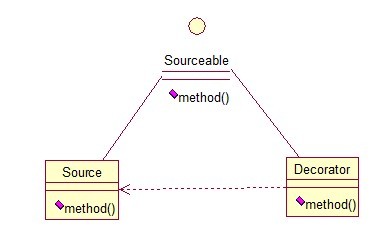介绍
装饰模式就是给一个对象增加一些新的功能,而且是动态的,要求装饰对象和被装饰对象实现同一个接口,装饰对象持有被装饰对象的实例。
关系图:

Source类是被装饰类,Decorator类是一个装饰类,可以为Source类动态的添加一些功能。
接口:
1 | public interface Sourceable { |
被装饰类:
1 | public class Source implements Sourceable { |
装饰类:
1 | public class Decorator implements Sourceable { |
测试类:
1 | public class DecoratorTest { |
在不改变被装饰类的前提下,通过装饰类装饰被装饰类的每个方法,实现功能增强。
装饰模式应用场景:
- 需要扩展一个类的功能。
- 动态的为一个对象增加功能,而且还能动态撤销。(继承不能做到这一点,继承的功能是静态的,不能动态增删。)
缺点:
- 产生过多相似的对象,不易排错。
适配器模式和装饰模式的区别:
- 适配器模式的旧类没有实现目标接口,为了重用旧类的代码,将旧类或者旧类的对象包裹在适配器中,调用的依旧是旧类的代码。
- 装饰器模式的旧类本身已经实现了目标接口,只是为了动态拓展类的功能,(如在调用方法的前后输出日志等),用装饰器类包裹旧类,调用旧类的代码。